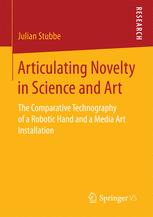

Most ebook files are in PDF format, so you can easily read them using various software such as Foxit Reader or directly on the Google Chrome browser.
Some ebook files are released by publishers in other formats such as .awz, .mobi, .epub, .fb2, etc. You may need to install specific software to read these formats on mobile/PC, such as Calibre.
Please read the tutorial at this link: https://ebookbell.com/faq
We offer FREE conversion to the popular formats you request; however, this may take some time. Therefore, right after payment, please email us, and we will try to provide the service as quickly as possible.
For some exceptional file formats or broken links (if any), please refrain from opening any disputes. Instead, email us first, and we will try to assist within a maximum of 6 hours.
EbookBell Team

5.0
68 reviewsJulian Stubbe aims at characterizing what novelty is in the becoming of objects and how the new becomes part of a shared reality. The study’s method is comparative and concerned with technological practice in science as well as in art. It draws on a detailed comparison of two cases: the becoming of a robotic hand made from silicon, and the genesis of a media art installation that renders visible changes in the earth’s magnetic field. In contrast to the canon of sociological innovation studies, which regard novelty as what actors in the field label as new or innovation, the author attempts to delineate certain shifts in an object’s becoming that individuate an object and render its difference visible. This entails attending the enactment of novelty through cultural imaginaries and narratives about technologies, as well as acknowledging the shifts in technical forms that make loose elements enter a new kind of circularity. From this perspective, novelty is an articulation: when differences are not contradicting, but when differing characteristics are aligned, fitted, and click in so as to appear and behave as a distinct entity.